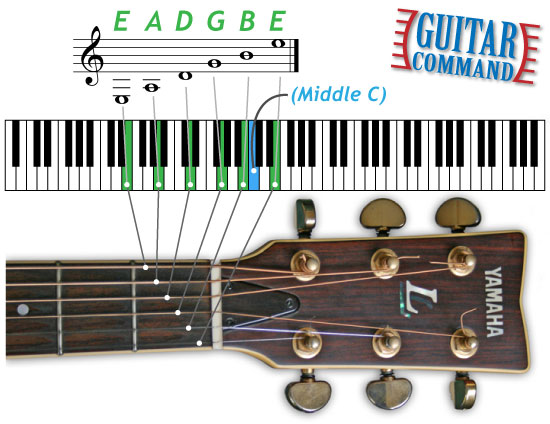

See, when 2 pitches are close, but not perfect, those 2 waveforms’ peaks and valleys hit against each other on the way to your ear. You will be tuning the 2nd string, and listening for the waveforms to get in sync. You play the open first string, and while it is ringing, play the 5th fret on the B string. This note can be found on the 5th fret of the B string. You then find a fretted note on the second string (B) that is supposed to be the same pitch as the open first string. What does all this physics nonsense have to do with tuning? Because all of this ‘syncing and not syncing’ stuff can be heard! When tuning the guitar to itself, you assume (more on this later) the first string (the small E) is in tune. The dotted lines represent the fact that the peaks and valleys don’t sync up. Here is another artistically dubious representation of this: However, two notes that are not perfectly in tune don’t sync up perfectly.

In fact, this could be mistaken for just one note. Two notes that are perfectly in tune are a perfect copy of one another. The lower the pitch, the more spread apart the waveform is. Now, the higher the pitch, the peaks and valleys of this waveform are closer together.

Sound travels in wave forms, and a (very) simplified picture of how it travels over time is this: It took me weeks to be able to listen to 2 pitches, and focus on which one is higher in pitch and which one was lower. To do this, we have to know what to listen for. It relies on our own ear’s ability to match the pitch of one string to another. This method tunes to a standard, which is the open first (smallest) string. This will assure that all of your chords play in tune, and any solo guitar pieces will sound in tune as well.

The method of tuning that a few decades of beginning guitarists used is tuning the guitar to itself. My favorite are these 2:Įlephants (easy to remember this is the biggest string)įeel free to make up your own, but it is important to know the letter names of the strings for most of the methods of tuning here. You can remember these letters by making an acronym. From the low (biggest) string, to the highest (smallest), these notes are E A D G B E. The strings are tuned to the musical notes they represent. Standard Tuning refers to the traditional tuning of the guitar. This a beginning primer featuring a little history, some physics, and has a roundup of the many options we have for keeping our guitar in tune with the rest of our musical world. While this article focuses on standard tuning (more on that in a minute), it can be applied to many of the tunings the kids are using these days. While tuning is somewhat difficult to understand in the first few weeks of guitar playing (less so now with automatic tuners), guitarists in this modern age have many ways we can tune our guitars. To guitar players who have been playing a few months or more, there is nothing quite as irritating as listening to an out-of-tune guitar.


 0 kommentar(er)
0 kommentar(er)
